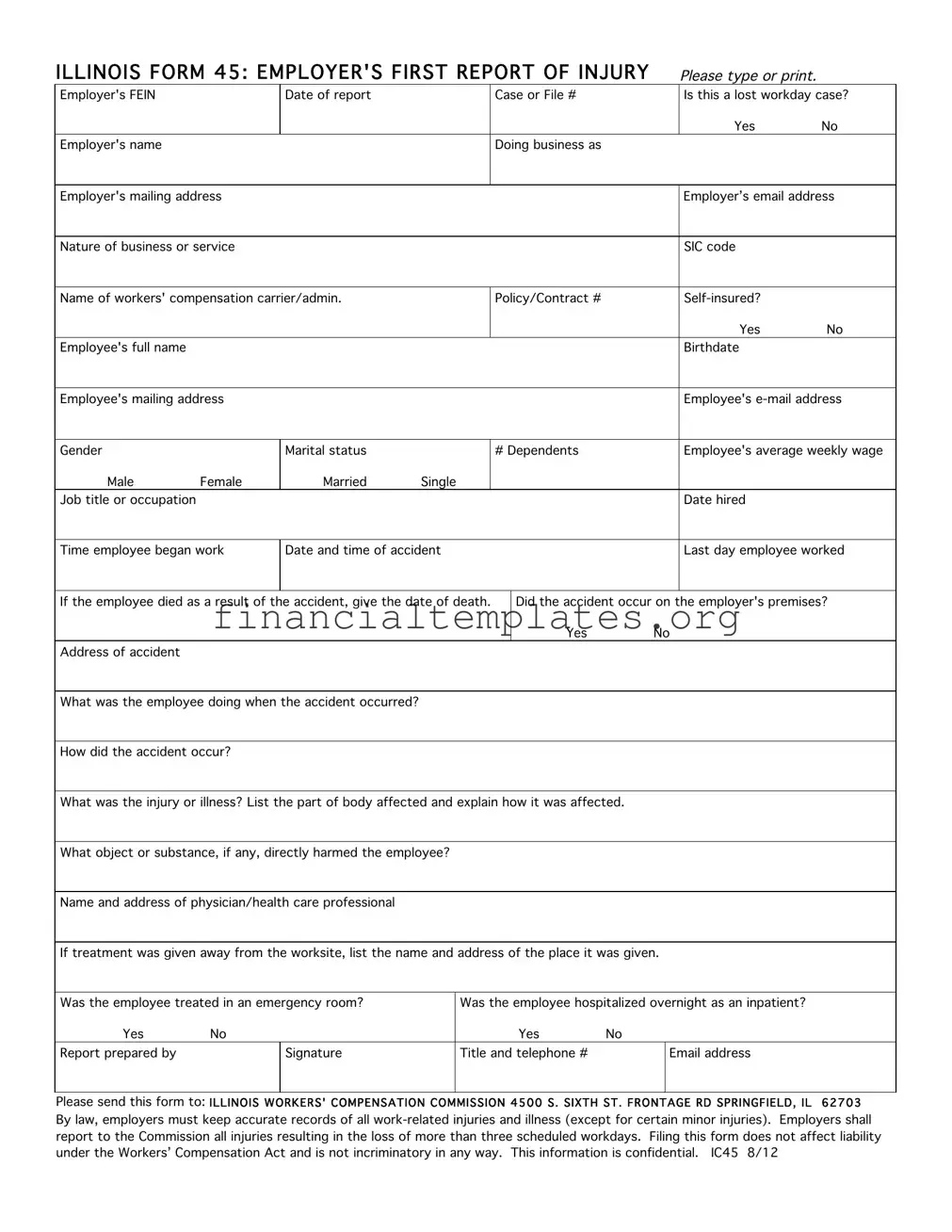The Illinois Form 45 bears resemblance to the Occupational Safety and Health Administration's (OSHA) Form 300, known as the "Log of Work-Related Injuries and Illnesses." Both forms are integral in officially documenting work-related injuries or illnesses, adhering to regulatory requirements to maintain workplace safety and health standards. They require detailed information about the employee, the nature of the injury or illness, how the event occurred, and the outcome. However, the OSHA Form 300 is geared towards internal record-keeping to help in identifying workplace hazards and implementing preventive measures, while the Illinois Form 45 specifically facilitates the reporting process to a state regulatory body for workers' compensation purposes.
Another document similar to the Illinois First Report 45 form is the "First Report of Injury or Illness" form used in many other states for workers' compensation claims. Like Illinois' Form 45, this document captures critical details about the injured or ill employee, including personal information, employment details, a description of the incident, and the nature of the injury or illness. This similarity exists because all states follow a fundamental requirement to report workplace injuries for workers' compensation, although specific forms and procedures can vary by state.
The "Employer's Report of Occupational Injury or Illness" to the Department of Industrial Relations (Form 5020 in California, for example) is another analogous document. It is used by employers to report work-related injuries or illnesses to their state's workers' compensation board, much like the Illinois Form 45. Both forms collect detailed information on the incident, including the employer’s and employee's details, and specifics of the injury or illness, ensuring that the event is properly recorded and can be evaluated for workers' compensation benefits.
The United States Department of Labor's Form LS-202, "Employer's First Report of Injury or Occupational Illness," which is part of the Longshore and Harbor Workers' Compensation Act (LHWCA), also mirrors the Illinois Form 45 in purpose and content. It is designed for reporting injuries or illnesses that occur to employees working on the navigable waters of the United States or in adjoining areas. This form similarly collects detailed information about the incident and the affected employee to ensure proper documentation and facilitate the claims process under the LHWCA.
Lastly, the "Automobile Accident Report" forms used by many insurance companies share the same foundational purpose with the Illinois Form 45: documenting specific incidents in detail for reporting purposes. Though one concerns workplace injuries and the other auto accidents, both require thorough documentation of the event, including date, time, and location, details of the parties involved, descriptions of what happened, and the resulting damage or injuries. This documentation is crucial for processing claims and determining liability and benefits.

